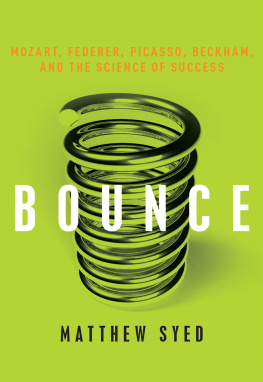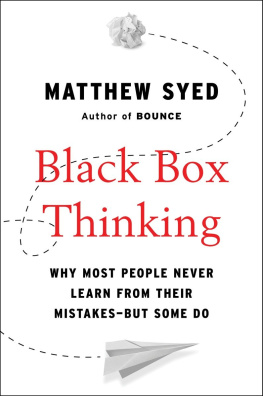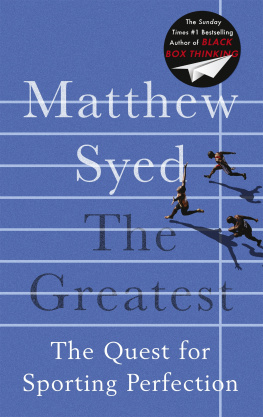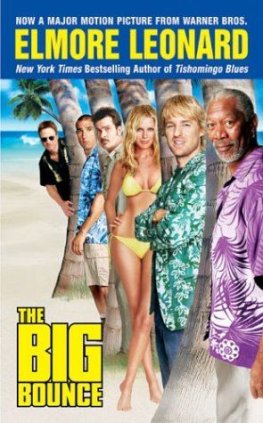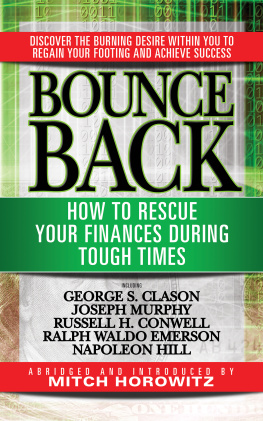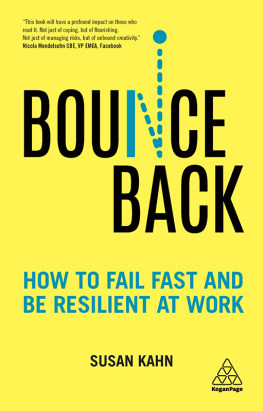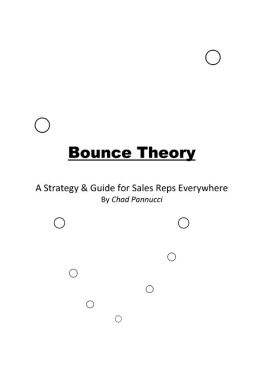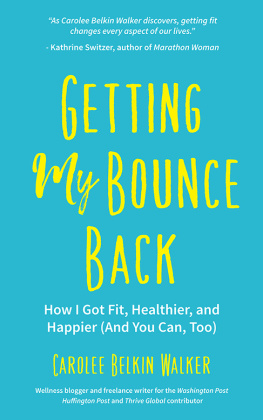The Hidden Logic of Success
The Autobiographical Bias
I n January 1995, I became the British number-one table tennis player for the very first time, which, I am sure you will agree, is a heck of an achievement. At twenty-four years of age, I suddenly found myself on the receiving end of regular invitations to speak to school audiences about my rise to international glory, and would often take my gold medals along to dazzle the youngsters.
Table tennis is a pretty big sport in the UK, with 2.4 million participants, 30,000 paid-up members of the governing body, thousands of teams, and serious riches for those who excel. But what made me special? What had marked me out for sporting greatness? I came up with a number of attributes: speed, guile, gutsiness, mental strength, adaptability, agility, reflexes.
Sometimes I would marvel at the fact that I had these skills in such abundance that they were capable of elevating melittle me!beyond hundreds of thousands of others aspiring for that precious top spot. And all this was doubly amazing, considering I had been born into a family in an ordinary suburb of an ordinary town in southeast England. There was no silver spoon. No advantages. No nepotism. Mine was a triumph of individuality; a personal odyssey of success; a triumph against the odds.
This, of course, is the way that many who have reached the top in sport, or indeed in any other field, choose to tell their stories. We live in a culture that encourages this kind of soaring individualism. Hollywood is full of such narratives, often sugarcoated in American Dream sentimentality. But while these stories are inspirational, rousing, and compulsively entertaining, are they true? Here is my story in table tennis, retold with the bits that I chose to ignore the first time around, as they diminished the romance and the individuality of my triumph.
1. Table
In 1978 my parents, for a reason they are still unable to explain (neither of them play table tennis), decided to buy a table tennis tablea super deluxe 1000 with gold lettering, since you askand to put it in our large garage. I do not know the exact percentage, but you can imagine that there were not many youngsters of my age in my hometown who possessed a full-size, tournament-specification table. Fewer still had a garage in which it could be housed full-time. This was my first bit of good fortune.
2. My Brother
My second piece of good fortune was having an older brother named Andrew who came to love table tennis as much as I. We would play for hours in the garage after school: dueling, battling, testing each others reflexes, experimenting with new spins, investigating new paddles, inviting friends over, who, although often more accomplished in other sports, were bemused to see just how far we had advanced in table tennis. Without knowing it, we were blissfully accumulating thousands of hours of practice.
3. Peter Charters
Mr. Charters was a teacher at the local primary school, a tall man with mustache, a twinkle in his eye, a disdain for conventional teaching methods, and a passion for sports that bordered on the fanatical. He was the coach of almost all of the after-school sporting clubs, the manager of the school soccer team, the organizer of school sports day, custodian of the badminton equipment, and inventor of a game called Bucket Ball, a kind of improvised basketball.
But Charters cared about one thing above all: table tennis. He was the nations top coach and a senior figure in the English Table Tennis Association. The other sports were just a front; an opportunity to scout sporting talent wherever it emerged so he could focus itruthlessly and exclusivelyupon table tennis. No child who passed through Aldryngton School in Reading was not given a tryout by Charters. And such was his zeal, energy, and dedication to table tennis that anybody who showed potential was persuaded to take their skills forward at the local club, Omega.
Charters invited me and my brother Andy to join Omega in 1980, at the very moment we were beginning to outgrow the garage.
4. Omega
Omega was not a luxurious clubit was a one-table hut in a gravel enclosure a couple of miles from where we lived in suburban Reading: cold in winter, ferociously hot in summer, with plants growing through the roof and floor. But it had one advantage that made it almost unique anywhere in the county: it was open twenty-four hours a day, for the exclusive use of its tiny group of members, each of whom had a set of keys.
My brother and I took full advantage, training after school, before school, on weekends, and during the holidays. We were also joined by other Aldryngton alumni who had been spotted and snapped up by Charters, so that by 1981 Omega was becoming something of a sensation. One street alone (Silverdale Road, on which the school was situated) contained an astonishing number of the nations top players.
At number 119 were the Syeds. Andrew, my brother, went on to become one of the most successful junior players in the history of the UK, winning three national titles before retiring due to injury in 1986. He was later described by Charters as the best young player to emerge from England for a quarter of a century. Matthew (thats me) also lived at 119 and became a long-serving England senior number one, a three-time Commonwealth champion, and a two-time Olympian.
At number 274, just opposite Aldryngton, lived Karen Witt. She was one of the most brilliant female players of her generation. She won countless junior titles, the national senior title, the hugely prestigious Commonwealth championship, and dozens of other competitions in a sparkling career. When she retired with back trouble at the age of twenty-five, she had changed the face of womens table tennis in England.
At number 149, equidistant between the Syeds and the Witts, lived Andy Wellman. He was a powerful player who would go on to win a series of titles, mainly in doubles, and was widely feared, particularly after defeating one of the top English players in the prestigious Top 12 event.
At the bottom of Silverdale Road was Paul Trott, another leading junior, and Keith Hodder, an outstanding county player. Around the corner were Jimmy Stokes (England junior champion), Paul Savins (junior international), Alison Gordon (four times English senior champion), Paul Andrews (top national player), and Sue Collier (England schools champion). I could go on.
For a period in the 1980s, this one street, and the surrounding vicinity, produced more outstanding table tennis players than the rest of the nation combined. One road among tens of thousands of roads; one tiny cohort of schoolkids against millions up and down the country. Silverdale Road was the wellspring of English table tennis: a Ping-Pong mecca that seemed to defy explanation or belief.
Had some genetic mutation spread throughout the local vicinity without touching the surrounding roads or villages? Of course not: the success of Silverdale Road was about the coming together of factors of a beguilingly similar kind to those that have, from time to time, elevated other tiny areas on our planet into the sporting ascendancy (Spartak, an impoverished tennis club in Moscow, for example, created more top-twenty women players between 2005 and 2007 than the whole of the United States).
In particular, all of the sporting talent was focused ruthlessly on table tennis, and all of the aspiring players were nurtured by an outstanding coach. And as for me, with a table in the garage and a brother as passionate about Ping-Pong as myself, I had a head start before I even got to Aldryngton.
The Myth of Meritocracy
My parentsbless themcontinue to describe my success in table tennis as an inspirational triumph against the odds. That is kind indeed, and I thank them for it. When I showed them a draft of this chapter, they disputed its entire thesis. Yes, but what about Michael ODriscoll (a rival from Yorkshire)? He had all your advantages, but he didnt make it. What about Bradley Billington (another rival from Derbyshire)? He had parents who were international table tennis players, but he did not become Englands number one.

